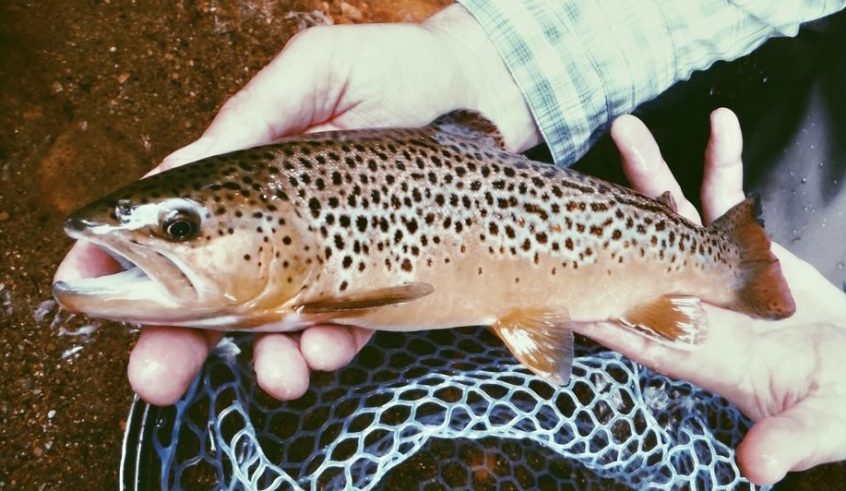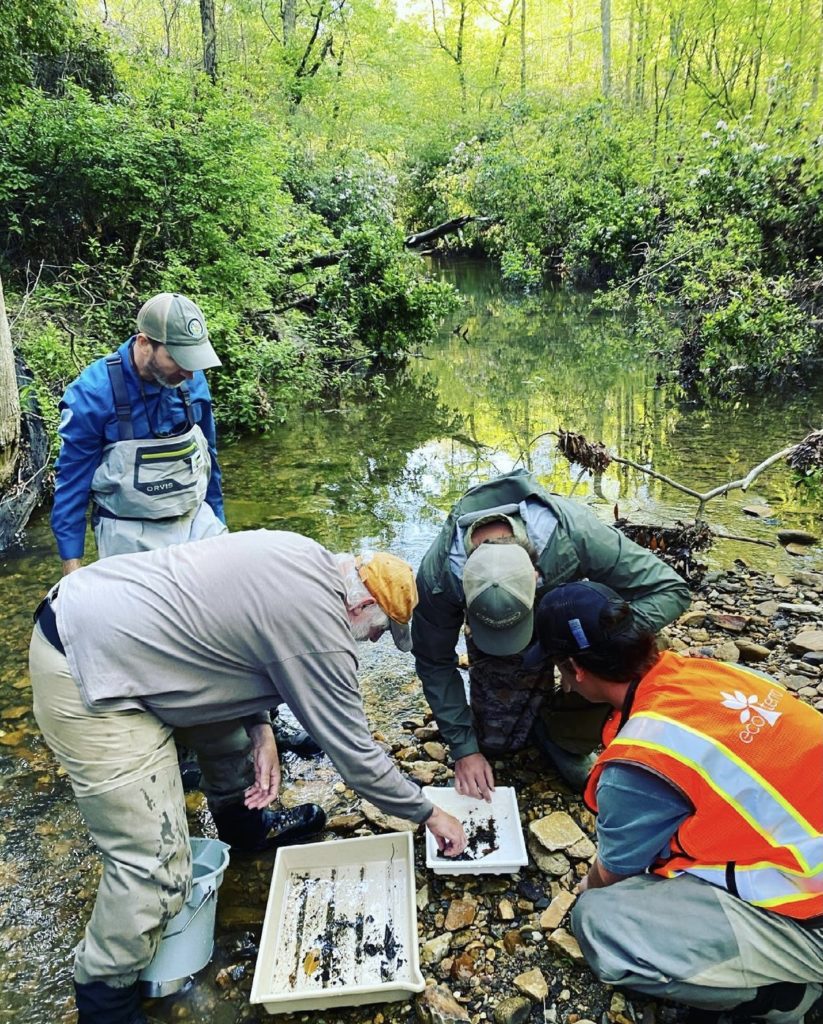
Healthy bugs, healthy streams
The use of biological monitoring, the study of biological organisms and their responses, can be used as an indicator of the environmental conditions affecting small streams and waterbodies. By sampling benthic macroinvertebrates, we can further understand the chemical, physical, and biological health of riparian ecosystems.

Figure 1
What are benthic macroinvertebrates?
The most basic definition describes benthic macroinvertebrates as aquatic animals/insects without a backbone and are large enough to be seen without a microscope. They include worms, crustaceans, and larval forms of aquatic insects, like dragonflies, stoneflies, mayflies, caddisflies, and many more. These organisms serve as the biological foundation for all aquatic ecosystems and are among the most diverse aquatic life forms. Aquatic macroinvertebrates live in a wide variety of habitats, including rocks and sediment in streambeds, and can be found in the smallest headwater streams down to the largest rivers. Their functions within ecosystems include serving as the primary decomposer of organic matter, as well as the primary source of food for the aquatic food chain, including fish, amphibians, reptiles, and birds (Figure 1). They are reliable indicators of water quality because they spend all or most of their lives in water, are easy to collect and differ in tolerance to pollution and anthropogenic stressors.
Benthic macroinvertebrates as indicators

Dave Penrose in Action
How can an ordinary insect help us determine the quality of water in a water body? Aquatic insects lay their eggs in water and live in the water during their immature larval form for a significant portion of their life cycle before transforming into their terrestrial adult stage. There are ideal conditions for different macroinvertebrate species in the larval stage, including temperature, pH, dissolved oxygen concentration, turbidity. Macroinvertebrates also exhibit varying responses to changes in water quality, physical habitat, and water chemistry. Each benthic species has a different tolerance to a range of stressors, including nutrients, sediments, and metals. Because benthic macroinvertebrate populations are not as mobile as fish and are therefore unable to move to avoid stressors, a sample of benthic macroinvertebrates at a given time indicates the degree of nonpoint source pollution acting on a waterbody (2). The species abundance and species diversity of aquatic taxonomic groups can give us clues of the specific conditions acting on a riparian ecosystem. The composition of these macroinvertebrate populations has predictable responses to human disturbances and stressors, which can often tell us more about the anthropogenic influences on an ecosystem compared to just a standard pH reading.
Role of Macroinvertebrates in Ecological Restoration
Human impacts such as land clearing, urbanization, mining, and erosion have resulted in the degradation of riparian ecosystems. To combat these anthropogenic impacts on our natural resources, restoration measures are necessary. Ecological restoration is the process of assisting the recovery of a degraded ecosystem back to its natural state to improve biological diversity, increase populations of rare and threatened species, and increase ecosystem function. By restoring freshwater aquatic ecosystems back to their natural state, there is improved habitat structure for macroinvertebrates and more food supply for the rest of the aquatic food chain, like the brown trout pictured above.
Sources: